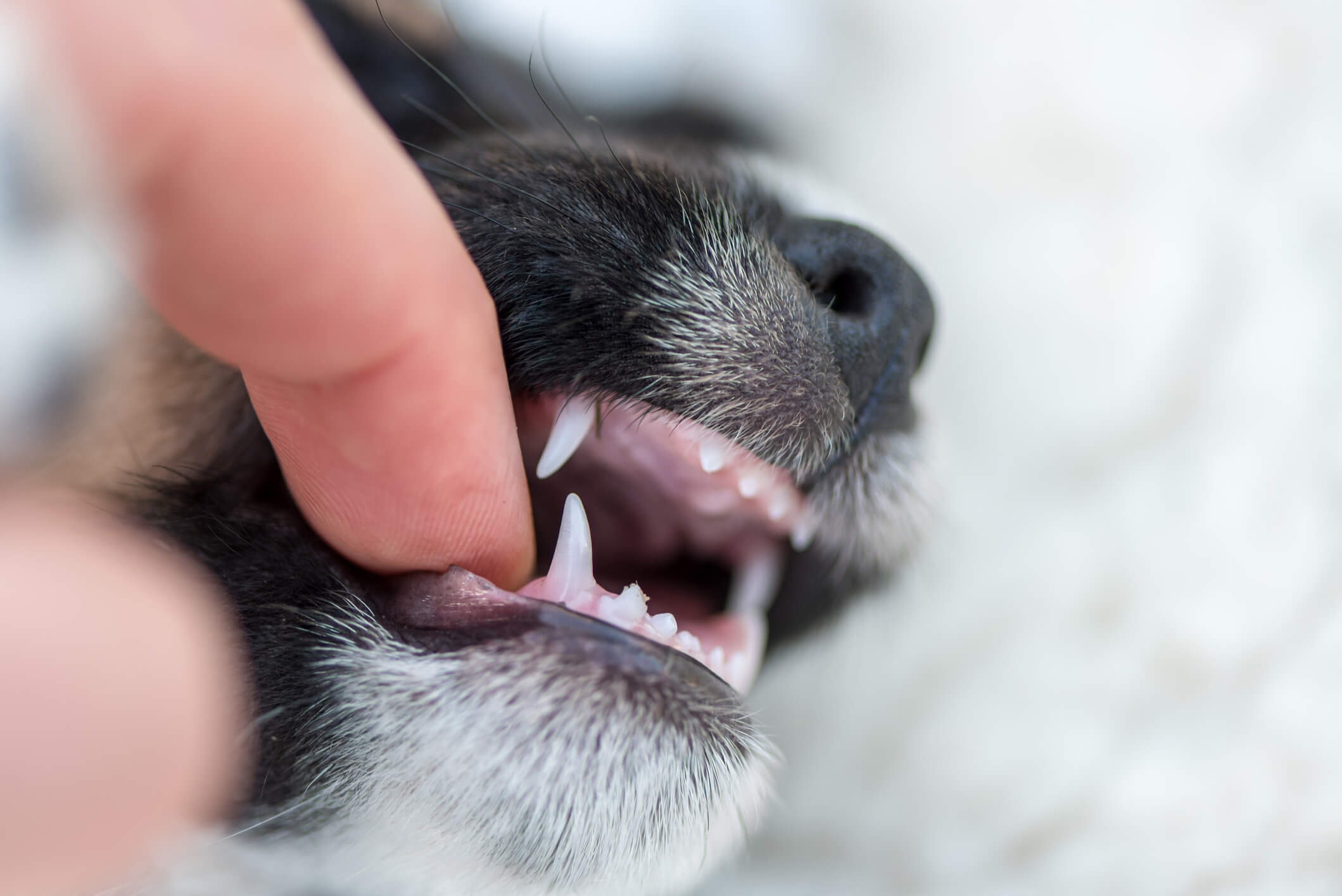
Understanding Gum Disease in Dogs
Most people are aware of the risks of gingivitis and actively work to prevent it by brushing their teeth and visiting the dentist each year. But did you know that dogs can experience gingivitis and gum disease, too? In the same way you care for your own teeth and gums, you should also care for your furry friend’s oral hygiene.
Gum disease in dogs is an all-too-common problem, but it’s easily preventable. To spare your pooch from painful dental problems later in life, learn more about canine gum disease and how to stop it in its tracks.
What is gum disease?
Gum disease, also called periodontal or dental disease, is a condition caused by persistent inflammation of the gums. While gum disease might start off as minor irritation, it can develop into a much more severe infection that leads to gum loss, tooth decay and the spread of harmful bacteria.
Gum disease might occur in dogs for a few reasons. The most common cause of periodontal disease in dogs is the buildup of plaque and tarter along the gum line. Plaque is a sticky film of bacteria that can be brushed away. But over time, plaque can harden into tartar, which is much harder to remove. The bacteria from these substances can eventually irritate the gums and lead to infections.
It’s also possible for gum disease to occur because of the immune system. Some dogs have overactive immune systems that attack the gums more severely than necessary when bacteria is present. If this happens, the gums might become inflamed and degenerate much faster than usual.
Canine gum disease typically progresses through different stages—each more severe than the last. Catching and treating dental disease early is crucial to preserving your dog’s teeth and gums and preventing more widespread health issues.
Gingivitis is the first stage of gum disease in dogs. It’s characterized by red and inflamed gum tissue. This is the only stage that’s reversible, meaning pet partners must take action as soon as they identify gingivitis in order to prevent more serious periodontal disease. As dental disease worsens, the structures that support the teeth are affected, which can lead to receding gums, tooth loss and jaw damage.
When gum disease becomes severe, dogs usually need to have teeth extracted. This is because the teeth have become so badly damaged by bacteria buildup or are loose because the surrounding gums and jaw bone have deteriorated, too. The disease can be very painful for dogs and may prevent them from eating or playing with toys.
Signs of gum disease in dogs
The trouble with gum disease in dogs is that so much of the decay happens beneath the gum line, invisible to the naked eye. Worse, our dogs can’t tell us when their mouths hurt. Some signs can be spotted with a quick peek under a dog’s lips, though. Others might be seen through the dog’s eating habits and behavior.
Pet owners need to keep a watchful eye out for these subtle signs of gum disease in dogs:
- Unusually bad breath
- Red and irritated gums
- Bleeding gums
- Bloody saliva
- Excessive drooling
- Discolored teeth
- Missing teeth
- Chewing only on one side
- Dropping food out of the mouth
- Unexplained weight loss
- Irritability or aggression
If you notice any of these signs or other unusual things about your dog’s mouth, visit your vet right away. Only a professional can take a look and run the tests or scans needed to determine whether your dog is experiencing gum disease.

Gum disease can cause widespread health problems
Periodontal disease can be extremely uncomfortable or painful for dogs, especially if it progresses to those later stages. As if this weren’t bad enough, though, untreated gum disease in dogs can lead to much more severe health problems.
If gum disease isn’t addressed, bacteria will continue to accumulate in pockets of the gums and in the teeth. Some bacteria might find its way to the back of the throat and cause a painful infection called tonsillitis.
Eventually, bacteria can also find its way into your dog’s bloodstream and spread to countless other parts of the body, like their major organs. Dogs with periodontal disease are more susceptible to heart, kidney and liver disease as well as eye infections. Their immune systems can also take a hit, making it much more difficult for your pup to live a happy, healthy life.
Act early to prevent canine gum disease
In order to preserve your dog’s gums, teeth and overall health, it’s extremely important to implement an oral health regimen—and stick with it throughout their life. It’s easiest to prevent gum disease in dogs, but early diagnosis and treatment can reverse early-stage gingivitis.
Brushing your dog’s teeth is one of the best ways to fight back against dental disease. Use toothpaste designed especially for dogs and a finger-brush or appropriately sized toothbrush and scrub those pearly whites clean once a day. Other tricks like oral health supplements, dental toys and dental treats can also keep plaque at bay.
However, just like with humans, there’s no substitute for professional cleanings. A vet will remove all the plaque and tartar from your dog’s teeth and gums while they’re under anesthesia. They’ll also likely do X-rays to check that their bone structures are in good shape.
At-home care paired with a deep cleaning once every few years can do wonders to prevent severe gum disease in dogs and ensure their mouths stay clean and comfortable.


